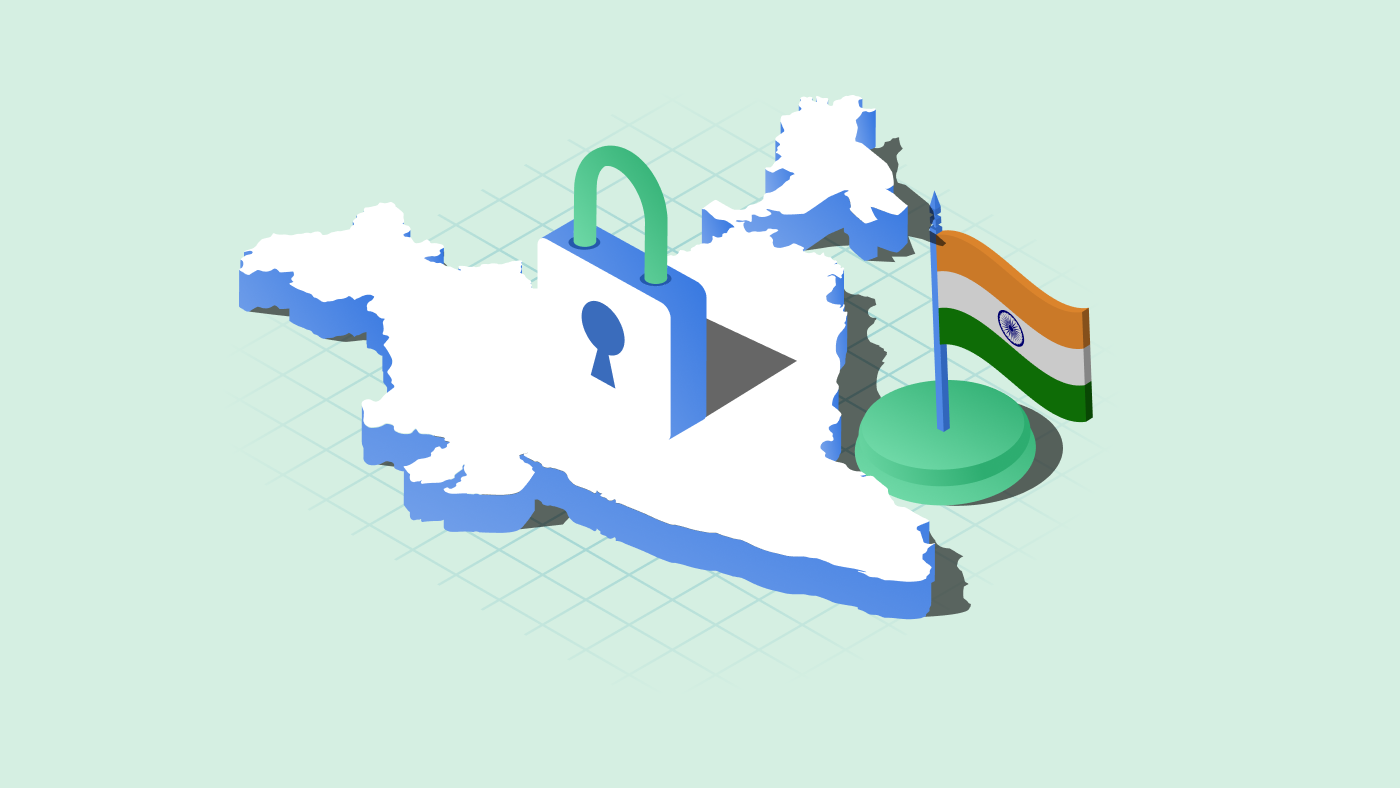Cookies. Just saying the word may have you craving fresh-baked treats. But for website owners, cookies also have a whole different meaning – the digital kind that tracks user data. There have been many changes in the cookie world. That means it’s crucial for marketers and businesses, especially small businesses, to keep abreast of recent cookie-related trends and evolving user behavior. This article will serve up the latest statistics on cookie use, cookie consent, user behavior, and its future. Let’s dive into these data that will give you insights into how to manage cookies on your website.
Bridging the knowledge gap
To begin, it’s crucial to understand that a substantial 42.4% of websites globally use cookies, and they have served as a fundamental component of website functionality for many years. Understanding the intricacies of cookies is not merely advantageous; it’s imperative. Surprisingly, a mere 28% of adults in the United States claim to possess a comprehensive understanding of internet cookies. Nearly half, at 49%, admit to grasping the concept only partially, while a significant 24% remain entirely confused by this digital entity.
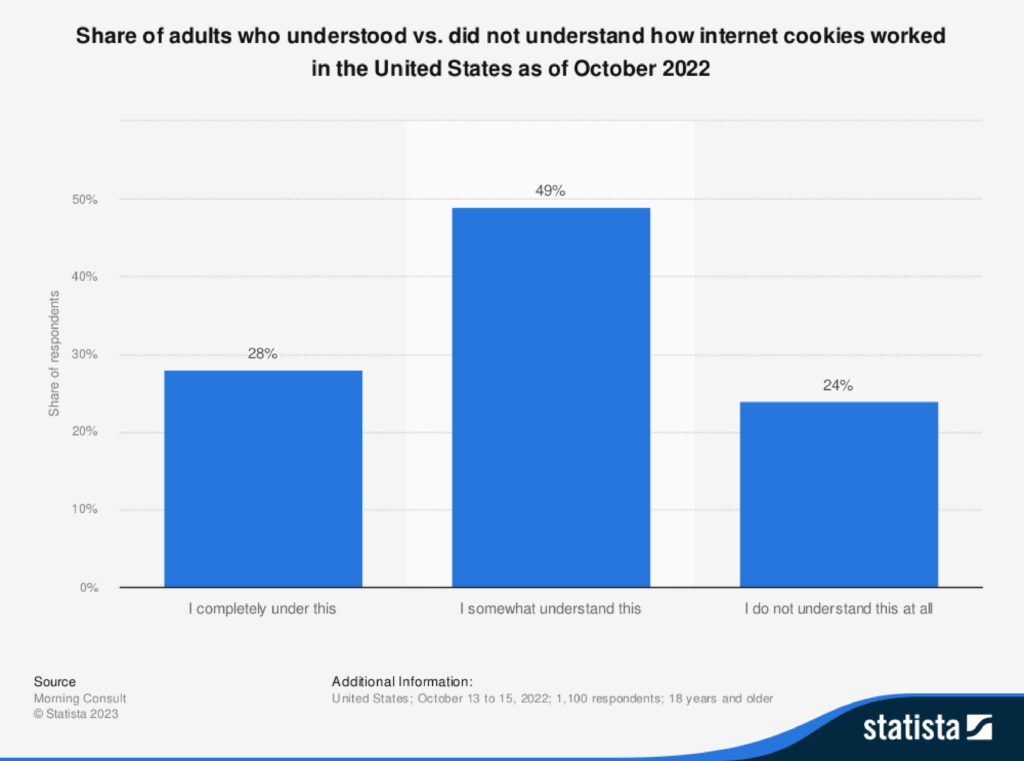
Without a profound understanding of cookies, website owners may inadvertently compromise user privacy and fall afoul of data protection regulations.
As a website owner, you should be aware of the browser cookies your website is using before informing the users. You should learn what they do to evaluate if the website needs user consent to use them. This way you can ensure your website stays on the right side of the privacy law.
Show a cookie banner that clearly states you use cookies and explain the type of cookies the website will use and their purpose. Detailed information about cookies and what they do should be available in the privacy policy or cookies policy and they should be easily accessible from any page, preferably linked on the website footer.
Free Cookie Search: An extensive open-source database of cookies
Ensuring privacy and compliance
In the digital era, the protection of user privacy is a paramount concern. The statistics paint a vivid picture of the significance of this issue. An astounding 65% of survey conducted by Deloitte respondents express profound concerns regarding the excessive use of cookies and its potential impact on their personal data. This highlights the critical need not only to respect user privacy but also to ensure that your website stands firmly within the bounds of data protection regulations.
Privacy breaches and non-compliance can have severe consequences, including legal ramifications and a tarnished reputation. To navigate this treacherous terrain, it’s imperative to make privacy and compliance cornerstones of your website’s cookie strategy.
Regularly conduct comprehensive audits of your website to ensure strict compliance with stringent data protection laws such as GDPR or CCPA. Implement robust data protection practices and ensure that your team is well-versed in privacy best practices. A commitment to privacy and compliance will not only safeguard your users’ data but also enhance their trust in your website.
Making first impressions
While users may be apprehensive about excessive use of cookies, they sure would appreciate honesty.
This study states that web service providers might not want to give more info than the law demands as they are afraid letting users know they are being tracked can make them more worried about risks. So, service providers might not want to give more info than the law demands. However, undisclosed cookie usage significantly reduces user trust, while disclosing the information has a negligent effect.
Furthermore, it’s really important for users to get clear information so they can make decisions that matter. In this study, which had people from the US and the UK as participants, a notable finding emerged: what influenced what people did the most was the choices they first saw in the pop-up window. Also, the research showed that users didn’t really understand what would happen if they closed the pop-up or just ignored it.
Ensure your policy statements are clear and comprehensive. Do not leave out any details that you think are essential for users to know to make an informed decision, including the use of tracking cookies, what they are used, the data they track, what the different options on the banner mean, and how to manage cookies. Additionally, it’s crucial to provide users with easy choices in these pop-ups.
Walking in users’ shoes
The way users interact with consent mechanisms varies, and understanding these nuances is pivotal. One of the challenges that website owners frequently encounter is crafting consent banners that not only capture user attention but also convey essential information effectively. The statistics in this domain provide valuable insights into user behavior.
Drawing insights from a survey conducted in France, approximately 28% of users consistently provide their consent for cookies on websites. An additional 37% demonstrate a recurring pattern of acceptance. In stark contrast, a mere 5% resolutely abstain from this digital agreement, while three in ten users diligently endeavor to minimize their interactions with cookies.
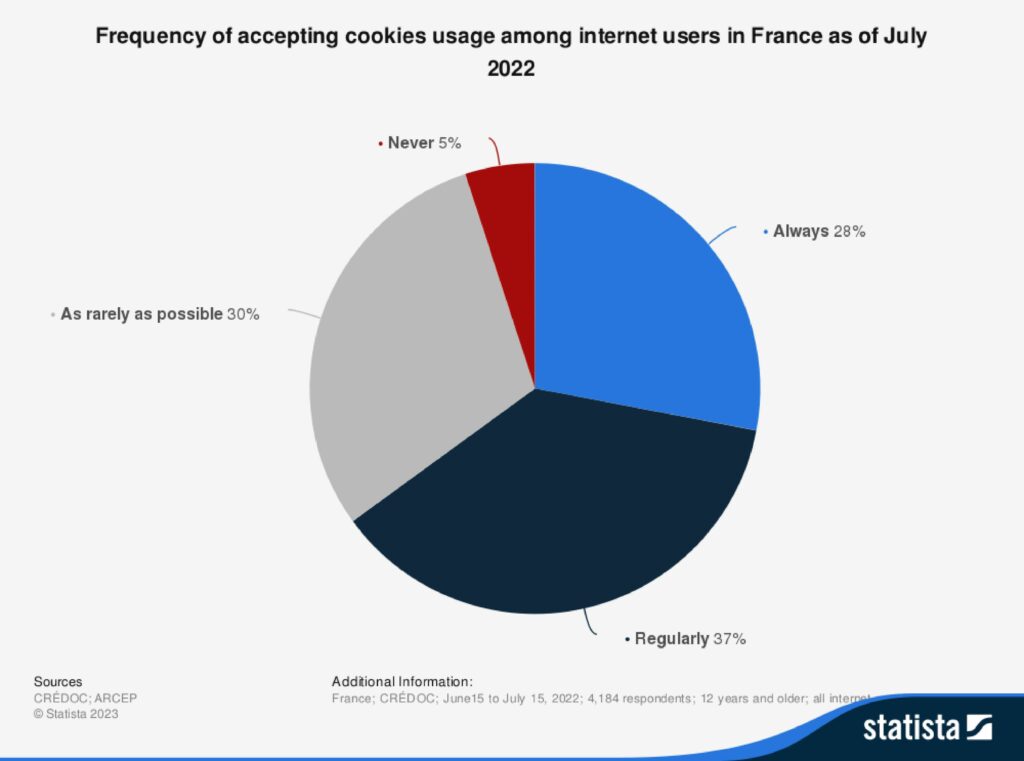
These statistics underline the importance of crafting consent strategies that are not only legally compliant but also user-centric. A one-size-fits-all approach may not be effective in catering to the diverse attitudes of users toward cookie consent.
Develop clear and user-friendly consent mechanisms on your website. When designing consent banners for your website, focus on creating visually engaging elements that also provide concise yet comprehensive information about your website’s cookie usage. Consider implementing interactive elements to encourage user engagement and strengthen transparency. Empower users to customize their preferences, offering them a sense of control and fostering trust. Understanding and accommodating user preferences will be the cornerstone of your consent management strategy, enhancing both user experience and compliance standing.
Empowering user choice
The functionality of your website’s consent tools plays a pivotal role in user satisfaction and trust. This study reveals that 55% of websites’ consent tools lack the option for users to proactively tailor their cookie consent settings. However, the remaining 45% allow users to either opt-in (33%) or opt-out (12%) of specific cookie categories.

To enhance user satisfaction and trust, invest in user-friendly consent management tools that offer customization features. Empowering users to have control over their cookie preferences builds a sense of empowerment and trust. Customization options are not only a compliance requirement but also a user-centric approach that can enhance your website’s reputation.
Varying consent rates
Zooming out to a global perspective, we uncover striking disparities in cookie consent rates. In a 2021 survey, Poland stands as the global leader with an impressive 64% consent rate, while the United States has the lowest at 32% consent rate. These discrepancies emphasize the significance of regional preferences and the influence of local regulatory environments on cookie acceptance.
To address varying cookie consent rates, customize your approach to regional preferences and regulations. Make your explanations clear and simple, offering granular control to users. Ensure your privacy policy is accessible and easily understood. Prioritize user privacy and adaptability to navigate consent rate variations effectively.
Leveraging user data
In an era where data is often considered the new oil, website owners can leverage the willingness of users to exchange their personal data for digital rewards. The statistics reveal a compelling narrative – an impressive 60% of internet users are open to sharing their personal data in exchange for discounts and premium services.
Recognize this willingness as an opportunity to tailor your offerings and enhance user engagement. However, approach this exchange of data with the utmost responsibility and transparency. Ensure that users understand the value they receive in return for their data, building trust and loyalty in the process.
Third-party cookie dilemma
When it comes to the spotlight-stealer third-party cookies, a different narrative unfolds. As per a survey conducted in late 2022, 75% of responding full-time marketing and customer experience leaders from 8 countries worldwide relied on third-party cookies. An astonishing 45% allocated at least half of their marketing budgets to cookie-based activations, with nearly 64% planning to increase such investments in 2023.
However, this heavy dependence on cookies raises questions about the sustainability of this approach, especially in light of evolving privacy regulations and the looming ban on third-party cookies by Google. A global survey conducted in 2023 revealed that a not-so-shocking 92.8% of advertisers and publishers are concerned about third-party cookie depreciation, of which 14.4 think it would be devastating for them.
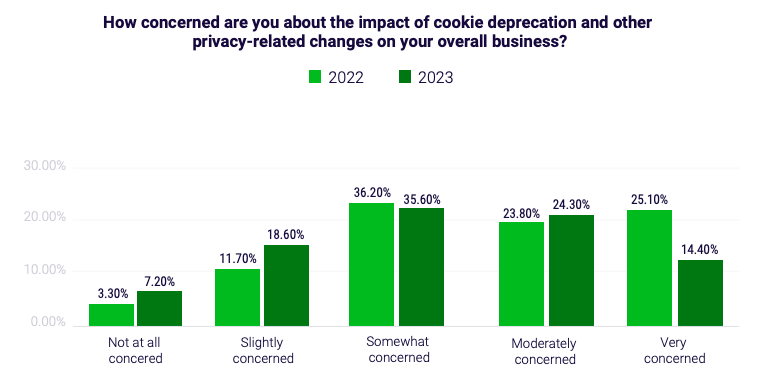
However, considering the year-over-year (YoY) comparison, their level of concern has decreased. This suggests that the industry is starting to focus on finding solutions rather than being overly anxious about the situation.
To effectively tackle the third-party cookie challenge, it’s crucial to adopt a well-rounded strategy. Prioritize user privacy by obtaining their explicit consent for data collection, giving them control over their information. Diversify your data sources, moving beyond reliance on cookies alone. Shift your advertising focus towards contextual targeting, which means delivering ads based on what users are currently interested in rather than tracking their past behavior.
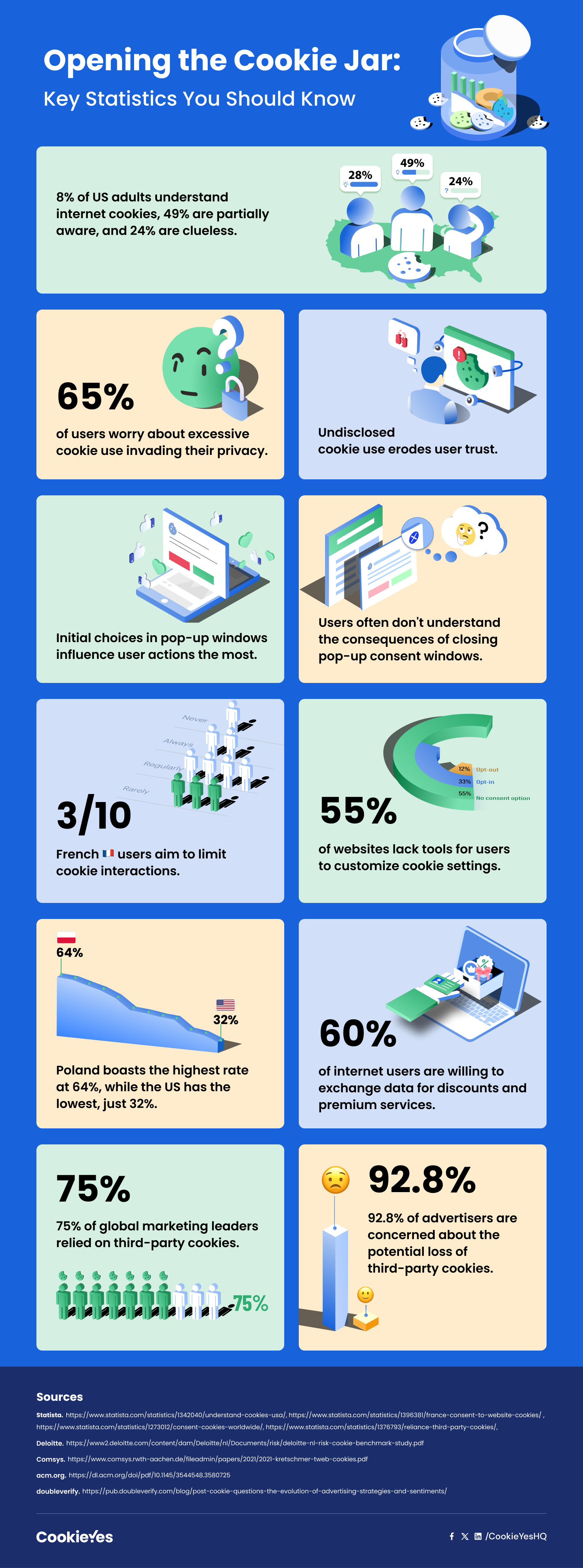
An agile approach to cookie management
As a website owner, mastering the digital landscape requires not only a profound understanding of cookies but also an agile approach to cookie consent management — acquainting with cookies and their use, commitment to privacy and compliance, engaging consent banners, user customization, responsible data utilization, and even alternate solutions.
Armed with these insights and best practices, you can navigate the digital realm by providing a user-focused experience while maintaining compliance. By achieving this balance, you will not only enhance your website’s reputation but also build lasting trust with your users in an increasingly data-conscious world.
CookieYes cookie consent manager seamless compliance with major cookie laws. With our Google-certified CMP, you can
- Customize cookie banner to add or modify cookie information as you like
- Auto-scan website for cookies
- Add granular opt-in and opt-out consent options
- Auto-block third-party cookies prior to consent
- Geo-target cookie banner for regional law compliance
- Log cookie consent to demonstrate proof of compliance
- Auto-translate to 30+ languages
- Comply with IAB TCF v2.2 specifications
Frequently asked questions
What percentage of websites use cookies?
42.4% of websites worldwide use cookies.
What do Internet cookies track?
Internet cookies can track users’ search histories, purchases, browsing patterns, pages visited, location, device information, etc.
Where are cookies stored?
Cookies are stored in the user’s browser and sent back to the server with each new request, signaling the server to access stored data by cookies.
What is the future of cookies?
Google Chrome’s phasing out of third-party cookies by 2024 will disrupt the current online advertising ecosystem, but it also presents an opportunity for advertisers and publishers to explore new, more privacy-focused ways to track users and deliver relevant ads.
Alternative technologies such as fingerprinting, contextual targeting, and first-party data could play a more prominent role in the cookieless future.

